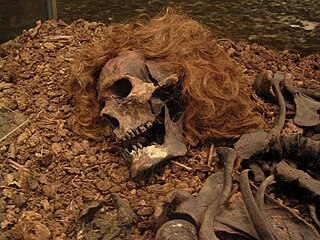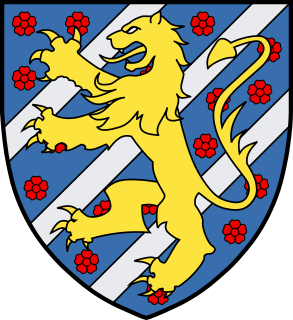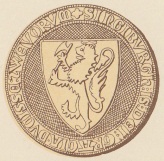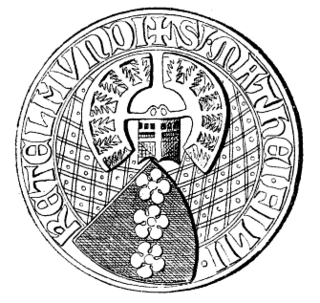 W
WBlanche of Namur was queen of Norway and Sweden as the wife of King Magnus VII / IV.
 W
WThe Bocksten Man is the remains of a medieval man's body found in a bog in Varberg Municipality, Sweden. It is one of the best-preserved finds in Europe from that era and is exhibited at the Varberg County Museum. The man had been killed and impaled to the bottom of a lake which later became a bog. The bog where the body was found lies in Rolfstorp about 24 kilometres (15 mi) east of Varberg on the west coast of Sweden, close to the most important medieval road in the area: the Via Regia. He was recently reconstructed to show what he may have looked like when he was alive.
 W
WBridget of Sweden ; born as Birgitta Birgersdotter, also Birgitta of Vadstena, or Saint Birgitta, was a mystic and saint, and founder of the Bridgettines nuns and monks after the death of her husband of twenty years. Outside Sweden, she was also known as the Princess of Nericia and was the mother of Catherine of Vadstena.
Brinolfo Algotsson was a Swedish Roman Catholic prelate and theologian who served as the Bishop of Skara from 1278 until his death. He was descended from nobles and studied for almost two decades in Paris at the college there before returning to his homeland as a dean and canon prior to his episcopal nomination. He was diligent in his work in reforming the education of schools and the overall reorganization of his episcopal see. He was forced into a brief exile but was able to continue his work upon his return.
 W
WCatherine of Sweden, Katarina av Vadstena, Catherine of Vadstena or Katarina Ulfsdotter was a Swedish noblewoman. She is venerated as a saint in the Roman Catholic Church. Her father was Ulf Gudmarsson, Lord of Ulvåsa, and her mother was Bridget of Sweden.
 W
WEuphemia of Sweden was a Swedish princess. She was Duchess consort of Mecklenburg, heiress of Sweden and of Norway, and mother of King Albert of Sweden. (c. 1338-1412) .
 W
WBo Jonsson (Grip) was head of the royal council and marshal under the regency of Magnus IV of Sweden. Also in the council was his friend and colleague, Karl Ulfsson av Ulvåsa, eldest son of Saint Birgitta. From 1369, during Albert of Sweden’s reign, he was Officialis Generalis and from 1371 Lord High Steward.
 W
WHedwig of Holstein or Helvig(Swedish: Helvig, German: Helwig) (1260–1324) was Queen of Sweden as the consort of King Magnus III Barnlock. Her parents were Gerhard I, Count of Holstein-Itzehoe and Elisabeth of Mecklenburg.
 W
WBlessed Hemming of Turku was a Swedish Roman Catholic bishop and served as the Bishop of Turku from 1338 until 1366. He was born in Sweden though relocated to Finland following his appointment as bishop. He became a popular figure in the diocese for his staunch dedication to the educational and spiritual needs of the faithful. He was also a close friend of Saint Bridget of Sweden. During his studies he knew the future Pope Clement VI as one of his classmates.
 W
WIngeborg Eriksdottir was a Norwegian princess and a Swedish duchess. She was Duchess of Uppland, Öland and Finland. As a widow, she had a seat in the regency government of her nephew Magnus, who reigned as king of both Sweden and Norway.
 W
WIngeborg of Norway, was a Norwegian princess and by marriage a Swedish royal duchess with a position in the regency governments in Norway (1319–27) and Sweden (1319–26) during the minority of her son, King Magnus of Norway and Sweden. In 1318–1319, she was Sweden's de facto ruler, and from 1319 until 1326, she was Sweden's first de jure female regent.
 W
WMats Kettilmundsson was a Swedish knight, riksdrots and statesman.
 W
WTorkel Knutsson was Lord High Constable of Sweden, member of the Privy Council of Sweden (Riksråd), and virtual ruler of Sweden during the early reign of King Birger Magnusson (1280–1321).
 W
WMargaret I was Queen of Denmark and Norway from 1387 and Queen of Sweden from 1389 until her death, and the founder of the Kalmar Union that joined the Scandinavian kingdoms together for over a century. Margaret was known as a wise, energetic and capable leader, who governed with "farsighted tact and caution," earning the nickname "Semiramis of the North". She was derisively called "King Breechless", one of several derogatory nicknames invented by her rival Albert of Mecklenburg, but was also known by her subjects as "the Lady King", which became widely used in recognition of her capabilities. Knut Gjerset calls her "the first great ruling queen in European history."
 W
WPhilippa of England, also known as Philippa of Lancaster, was Queen of Denmark, Norway and Sweden from 1406 to 1430 by marriage to King Eric of the Kalmar Union. She was the daughter of King Henry IV of England by his first spouse Mary de Bohun and the younger sister of King Henry V. Queen Philippa participated significantly in state affairs during the reign of her spouse, and served as regent of Denmark from 1423 to 1425.
 W
WCanute Porse the Elder or Knud/Knut Porse was a medieval Danish nobleman and Duke of Samsø, Duke of Halland, and Duke of Estonia.
 W
WRichardis of Schwerin was Queen of Sweden as the consort of King Albert.
 W
WValdemar was King of Sweden from 1250 to 1275.
 W
WValdemar Magnusson was a Swedish prince, heir to the throne of Sweden, and Duke of Finland.